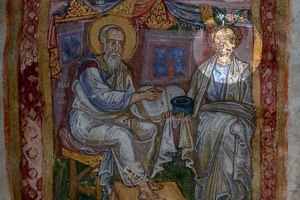
Common to the perspectives of Knox, Tyson, and Price is that Marcion not only formed the notion of a Christian canon, but also influenced the writing of the canonical Luke-Acts and conceptions of Christian scriptures. For this school especially, Marcion’s views on scripture, canon and authority are understood to be paradigmatic for later Christianity. Concerning scripture, Price argues that Marcion was the first to conceive of specifically Christian writings. While Knox and Tyson do not take Marcion’s influence nearly that far, they argue that Marcion not only gave rise to the idea of the Christian canon, and impacted the understood authority of written texts, especially the various versions of Luke-Acts. As with the Canon Formation School, the scholars conceive of Marcion’s views of scripture and authority as seeking to demonstrate and preserve that which is unique about the person and work of Jesus Christ. For the Canon and Literature Formation School, it remains clear that Marcion’s desire was to reinforce the uniqueness of the Christian message in a paradigmatic fashion.
In examining the perspectives of these scholars several questions worthy of further consideration arise, including concerns with the distinctiveness of the Gospel-Apostle format. Perhaps most important for this perspective, however, are the implications stemming from their rather late dating for the composition of Luke-Acts and their claims for a late and significant textual redaction and editing of the Luke-Acts corpus. To better address this issue, we now briefly turn to the perspectives of several New Testament textual critics. Numerous scholars of textual criticism have weighed in on the topic of manuscript textual stability during the early second century. Larry W. Hurtado writes that second and third century texts sufficiently demonstrate stability in such a way that it is extremely unlikely that any major recension of a text of the Christian writing later found in the New Testament occurred during any point during the second century.[100] Key for Hurtado’s reconstruction is that second century manuscripts tend to come from codices rather than scrolls, an indication that Christians had already set apart their writings even in the form that they were transmitted within.[101] Such a conception of textual stability severely undermines a position relying upon a major second century recension of Luke-Acts.

Further, the consensus of New Testament textual scholars on collections of scripture during the second century is quite clear. Hurtado writes that between Marcion’s collection of Pauline writings and other textual data it seems clear that collections of at least the four gospels and Paul were in use during the second century, perhaps having originated during the late first century.[102] Theo Heckel argues for a four-gospel collection by 120 CE at the latest.[103] Charles Hill writes that Papias knew of a four gospel collection preceding Marcion, sometime around the year 130 CE.[104] And David Trobisch has proposed that Paul himself may have compiled and began circulating a collection of his own works during the middle of the first century.[105] In the face of such arguments from textual scholars the perspective of the Canon and Literature Formation School seems increasingly unlikely.
Sources
[100] Larry W. Hurtado. “The New Testament in the Second Century: Text, Collections and Canon.” Transmissions and Reception: New Testament Text-Critical and Exegetical Studies. Editors J.W. Childers and D.C. Parker (“Texts and Studies, Third Series,” 4; Piscataway, NJ: Gorgian Press, 2006), 5. [101] Ibid., 7-8. [102] Ibid., 16, 18. [103] Theo K Heckel, Vom Evangelum des Markus zum viergestaltigen Evangelium. WUNT 120; Tubingen: Mohr-Siekech, 1999. [104] Charles E. Hill, “What Papias said about John (and Luke): A ‘New’ Papian Fragment,” JTS 49(1998): 582-629, esp. 616-7. [105] David Trobisch, Die Entstehung der Paulusbriefsammlung: Studien zu den Anfangen christlicher Publizistik. NTOA 10; Gottingen: Vandenhoeck & Ruprecht, 1989.

Leave a comment